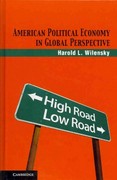Question
The following is a discussion related to this article: How Do Private Digital Currencies Affect Government Policy? (September 2019) Max Raskin, Fahad Saleh & David
The following is a discussion related to this article:
How Do Private Digital Currencies Affect Government Policy? (September 2019) Max Raskin, Fahad Saleh & David Yermack https://www.nber.org/papers/w26219
DISCUSSION
Summary
The paper begins by clarifying the discussion and defines the difference between state-sponsorship and centralisation. A currency is state sponsored if there is legal enforcement that can privilege the currency, e.g., taxation of competing currencies and/or legal tender laws. A currency that is centralised if it has formal barriers to entry, e.g., legal prohibitions/requirements to establish a new currency.
The paper applies these definitions to assert that state-sponsored, centralised currencies such as the e-krona are essentially equivalent in function to other central bank currencies. Contrasting this, the paper asserts that private, decentralised digital currencies can act as a disciplining mechanism for government monetary policy. As outlined in the abstract, it is upon this assertion that the paper will make its three major claims that in economies that allow digital currencies to operate will see
1. An increase in welfare for its citizens,
2. An increase in local investment,
3. And an increase in government revenue,
As opposed to economies that impose restrictions/disallow digital currencies to operate.
The model the paper builds asserts that citizens distribute their wealth between 3 assets, productive capital, unproductive capital, and the alternative investment (the digital currency) which is assumed to face no taxation. The citizen may only invest in the digital currency if the government allows it. The government is assumed to selfishly maximise its real revenues with no regard to citizen welfare, the main choice being whether to allow or disallow the digital currency alternative.
The solutions to this model indicate that welfare increases when digital currencies are allowed as it facilitates more diversification, and the digital currency imposes disciplinary pressure on the governments monetary policy. The model also indicates that an economy with open digital currencies will see increases in local investment, the currency acting as a hedge asset, and this complements local investing. The increase in welfare, enabling governments to raise tax rates and the increase in investment. It is through these channels that the government will see an increase in its revenue.
Critical analysis
The paper takes a novel approach in its classification of currencies, however for its purpose I believe this to be a sound approach. It is important to consider the outcomes of a digital currency with respect to its local economic environment and the clarity the paper provides in describing how a digital currency can relate to a sovereign currency is valuable. With this in mind, the conclusion of the paper is that a private (free from legal restrictions) and decentralised (free from formal barriers to entry) currency acts as a alternative for citizens and thus acts as a check on inflationary monetary policy. My main criticism would be that through the mechanics outlined in the paper, we would see similar effect if the economy allowed a foreign currency to be utilised in the same way. The paper makes note that its focus is on emerging economies with selfish governments, to which I would point out that many such systems exist currently, in many developing nations, e.g. DRC or Vietnam, where the USD is sought as a transactional currency when the local monetary policy has resulted in hyperinflation, whether this be sovereignly sanctioned or not. My interest would be if digital currencies would provide any distinct advantages to these existing arrangements, and I can identify key advantages, such as its ease of access and not being limited by the physical money supply that suggest this is likely.
YOUR TASK: Reply with a response to the discussion above that points out a related issue that was not brought up in the original discussion, identify a problem or inconsistency in the original discussion etc. (ABOUT 250 W O R D S)
Step by Step Solution
There are 3 Steps involved in it
Step: 1

Get Instant Access to Expert-Tailored Solutions
See step-by-step solutions with expert insights and AI powered tools for academic success
Step: 2

Step: 3

Ace Your Homework with AI
Get the answers you need in no time with our AI-driven, step-by-step assistance
Get Started


